Retelling the romances of iconic Bombay couples who happily made their shared professional worlds—across theatre, radio and medicine—personal
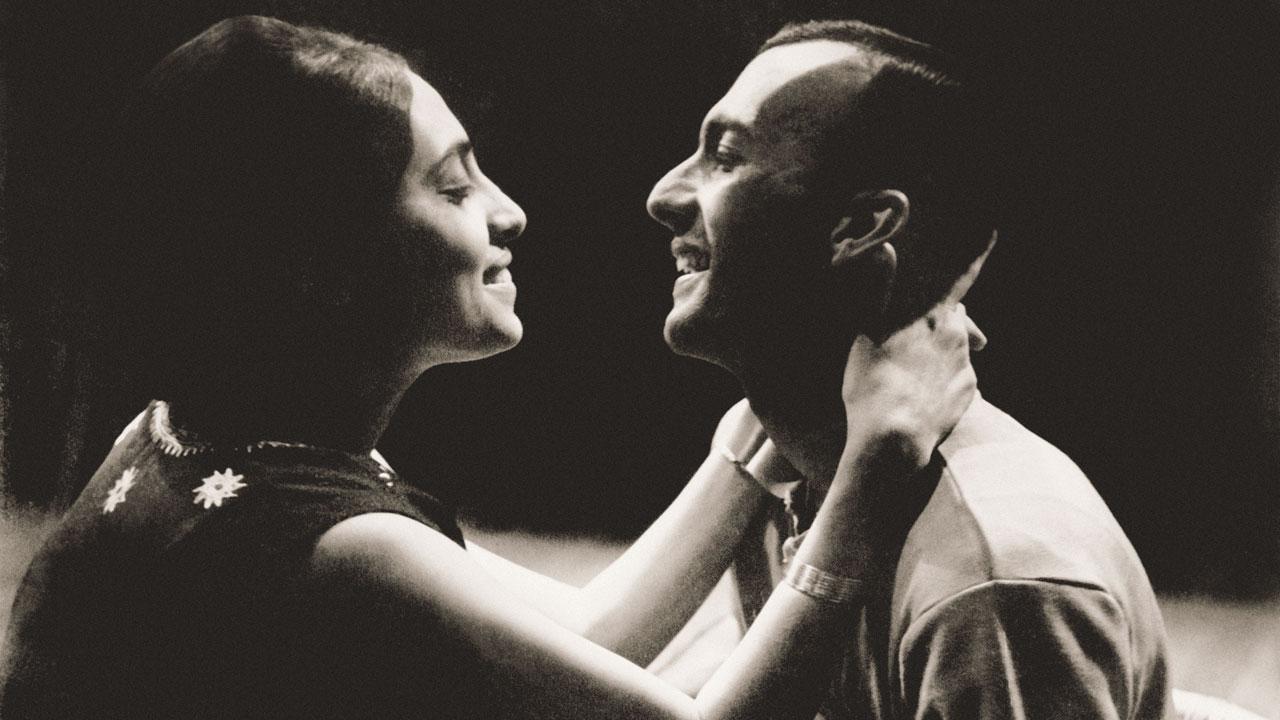
Dolly and Bomi Dotiwala in a moment from Sagan Ke Vagan, the 1966 hit chronicling a couple’s journey from first love to the autumnal years. PIC COURTESY/Meher Marfatia, Laughter in the House: 20th-Century Parsi Theatre
 Every love story is special. Some more so than others because of the sweet unexpectedness with which they come to you.
Every love story is special. Some more so than others because of the sweet unexpectedness with which they come to you.
ADVERTISEMENT
As one story did from Ameen Sayani, the living legend of radio broadcasting, the very first time I had the privilege of interviewing him. Endearingly, he said, “There was an interesting prelude to meeting my wife, Rama Mattu. Quite remarkably, MT Vyas, the principal of my New Era School, had told my parents, ‘Your boy will marry a Kashmiri girl.’ Written in gold letters in my heart, that line turned into a beautiful reality when I met Rama, a voice artiste and singer whose uncle headed Hindi music at AIR. Our son Rajil called her a music encyclopedia—to be relied on for information related to any Hindi film song under the sun.” Shakeel Badayuni, one of the lyricists closest to Ameen Saab, along with Sahir Ludhianvi, wrote the sehra verse that was read out when they married.
He added an amusing anecdote. Rapturous responses to the Binaca Geetmala show he hosted would pour in by the sackful during the programme’s glory years. “Dad refrained from accepting gifts. But what can you do, sometimes it’s just love,” Rajil reasons. When a lady admirer sent a shawl, Ameen Saab politely responded, “Thank you for the present but this would upset my wife.” The woman wrote back, “Ameen bete, I am old enough to be your mother. Please accept the gift.”
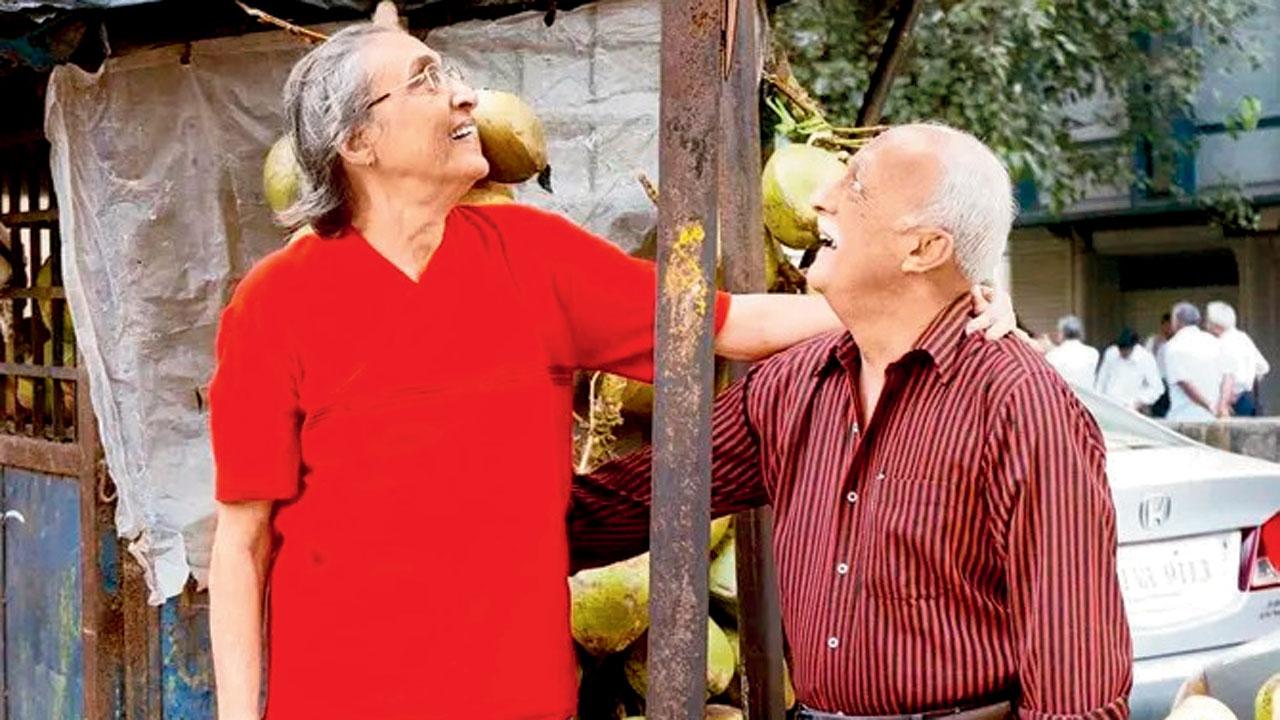
The Dotiwalas in 2011 on the Ballard Estate road named after their mentor. Pic/Sooni Taraporevala
Movie magic enhanced by lilting tunes led to real-life romance too. Some cinema czars proved especially productive from certain buildings they resided in. Zaver Mahal on Marine Drive had actor-producer AR Kardar from Lahore, who introduced Chand Usmani, Naushad and Majrooh Sultanpuri, and gave Mohammed Rafi his first hit, Suhaani raat dhal chuki.
SD Burman and son RD also flitted briefly through Zaver Mahal before shifting to Sea Green Hotel till their Bandra bungalow got ready. A Burman buff gives me an angle on the history of the number Tadbeer se bigdi hui taqdeer bana le from Navketan’s 1951 thriller, Baazi. Tapping the ghazal-turned-jazz beat in this home, an excited SD Burman asked Guru Dutt—who is supposed to have fallen for singer Geeta Roy while recording this song—to come across and hear his arrangement. Its second line, “Apne pe bharosa hai toh ek daao laga le (If you believe in yourself, take a chance)”, with which a guitar-strumming Geeta Bali tempts a shy Dev Anand, must have tugged at Guru Dutt’s heartstrings. Incidentally, though the song soared to success, it was frowned upon by the dour I&B Minister, BV Keskar, who infamously banned film songs on air in 1952. The buoyant Tadbeer se bigdi hui taqdeer bana le, he claimed, was overly orchestrated with Western instruments.
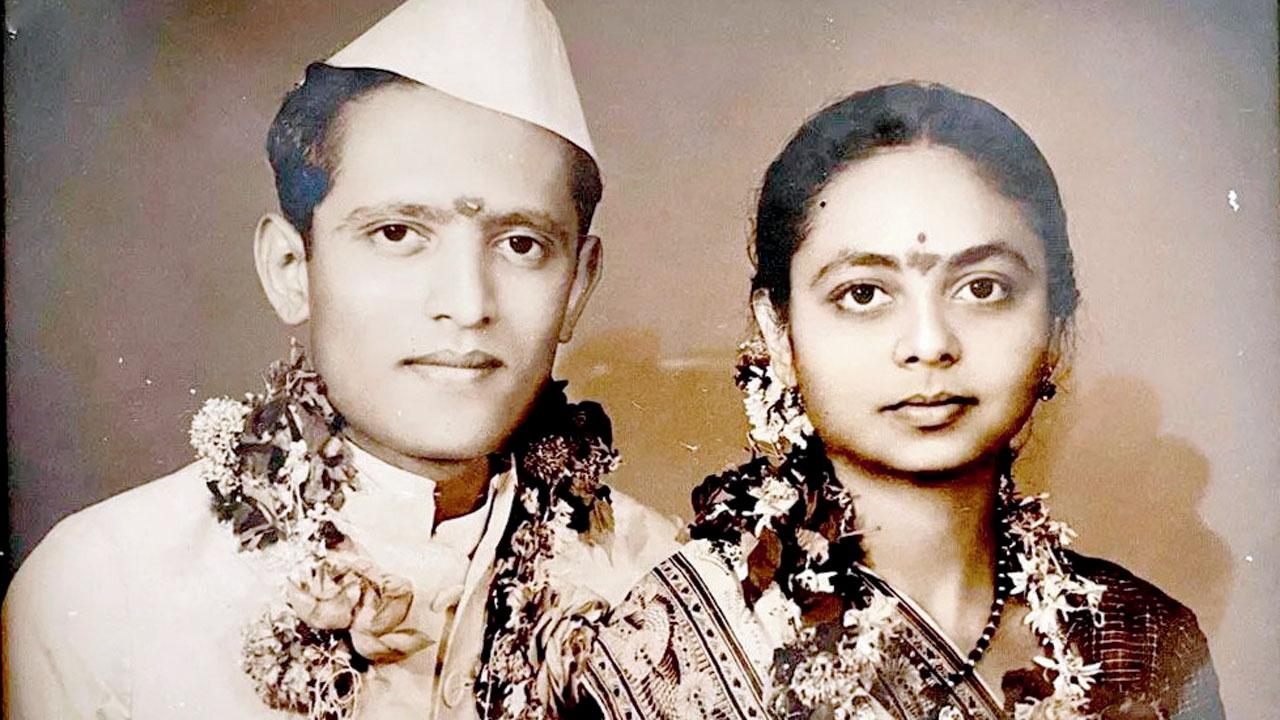
Amul Shah and Urmila Vashi on their “secret” wedding day in 1951
From entertainment to elopement... Believing as firmly in herself as in the love of her life, Urmila Vashi took a huge chance to be together with classmate Amul Shah. Wanting to board a Bombay-bound train, she climbed instead onto one chugging in the opposite direction. Urmila had come home to Navsari on a break from Grant Medical College (GMC). Every bit as bold as she was bright, she was determined to marry her beau, despite her family forbidding her from leaving Navsari to meet him again. Apart from the fact that she was fixing her own future and with someone still to settle financially, they belonged to different Gujarati castes.
Embarking on an adventure incredible for a girl to attempt alone in 1951, Urmila sneaked into Navsari Station. With no train to her destination scheduled for hours, she began walking on the opposite track, towards Surat, to throw pursuing relatives off-scent. A surprised motorman in a solitary engine picked her up. Realising she needed to reach Bombay, he requested a ride from a colleague going her way. She switched engines at Surat, jumping up and down in a puff-sleeved frock, the tailored trend of the day. Till the Bombay finale, it was a romantic escapade straight out of a Yash Raj movie. Awaiting his plucky bride-to-be in Bombay with admiration and trepidation, Amul knew little could deter her en route.
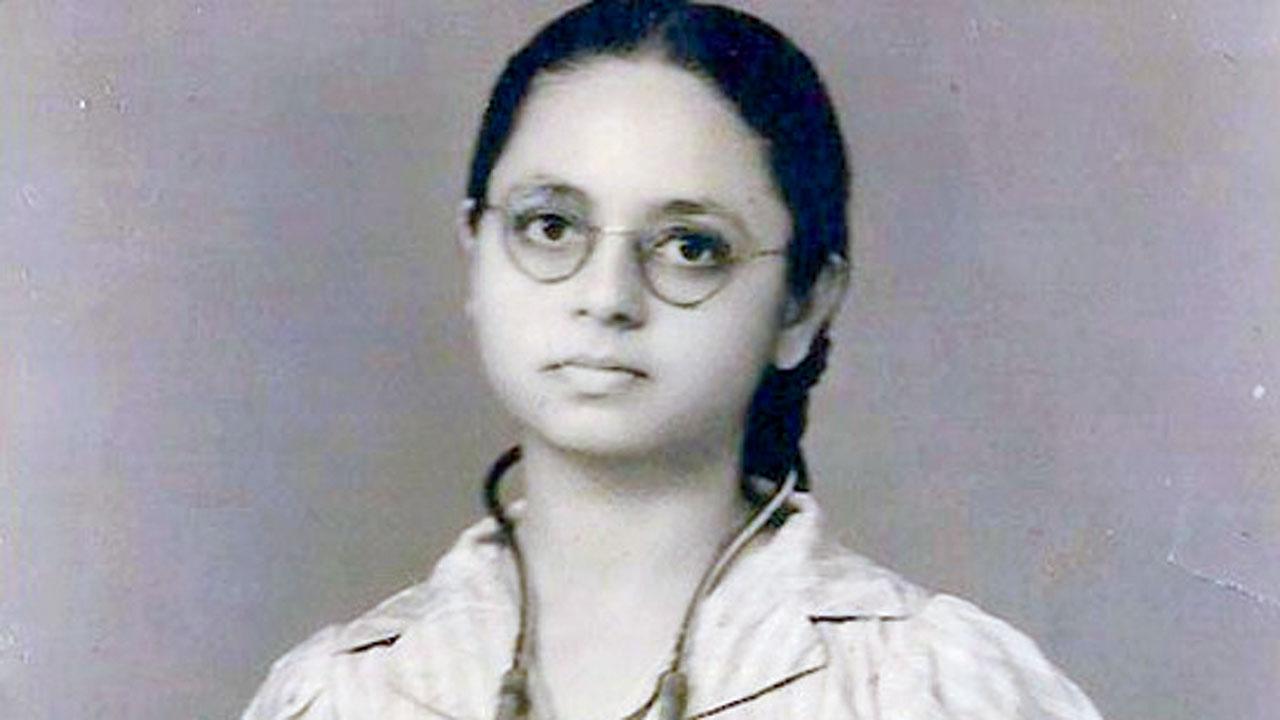
Vashi on attaining her medical degree. Pics Courtesy/Avani Shah
At GMC, Urmila and Amul had become instant, constant companions. For the final exams, she wheedled him into underlining salient paragraphs in medical tomes and focused on those marked sections. He diligently memorised copious whole chapters. She passed. He ducked.
On graduating, they practised as general physicians, him with more than a working knowledge of pediatrics, her, of gynaecology. Urmila was among Bombay’s first to earn an MBBS-DGO (diploma in gynaecology). Out-of-towners both, he was from Bhavnagar and sought hostel accommodation. From Mahavir Jain Vidyalaya at Gowalia Tank he commuted to GMC on foot, sparing precious saved annas. She lived in Kanji Khetsi Girls Hostel in Fort. Soon after that eventful train trip, she dressed for their secret wedding from a hostel room on the top floor of Mani Bhavan.
Four years after that clandestine ceremony, the official 1955 marriage (when Urmila Vashi became Pushpa Shah) was blessed by a now mollified family. The Shahs split the rent in Ghelabhai Mansion at Chowpatty and shared a clinic round the corner at Bharatiya Vidya Bhavan. Their prem kahani kept blooming through 70 summers. The city lost Dr Pushpa Shah at a grand 92 years.
Their student years similarly bonded architect, maverick parliamentarian and co-founder of the liberal Swatantra Party, Piloo Mody of Bombay, and Lavina (Vina) Colgan of Nebraska. Studying architecture at Berkeley, in studios in that University of California department fitted with long tables to accommodate drawings, she “straightaway sidled up right beside him. There was a vacant space next to Piloo, where I parked myself. Simple as that.”
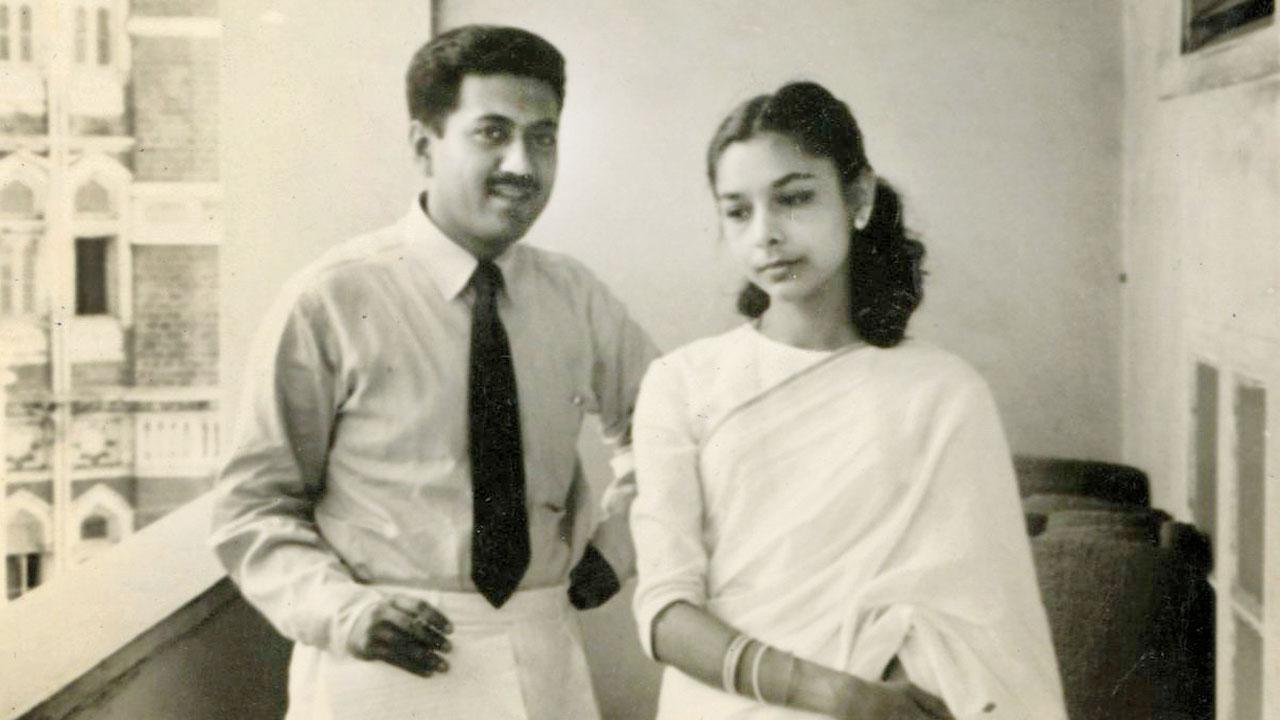
Ameen Sayani and Rama Mattu on the balcony of their Cecil Court office in Colaba. Pic Courtesy/Rajil Sayani
Back in Bombay, the couple set up Mody and Colgan in 1953. Vina opened Contemporary Arts and Crafts (CAC), possibly the first shop of its kind, on November 29, 1962. It was a significant date—the birthday of her mother-in-law Jerbai Mody (Piloo was industrialist Sir Homi Mody’s youngest son, after Russi and Kali). As she put it, “Piloo felt restless, convinced that designing pretty buildings wasn’t satisfying when the whole country was going to the dogs via the socialistic road. In 1959-60, he became a founder member of the Swatantra Party, working for it until he died in 1983.”
Vina designed for the firm alongside making Indian crafts cool. Tied to the country’s socio-political core, CAC was a shop with a conscience. Soon after its establishment, it proved that handlooms could indeed be heirlooms. With stores like Evans Fraser, Whiteway Laidlaw and Army & Navy shunting out, colonial Bombay was receding. Homes and offices were desperate for a dynamic leap in decor. Four design partners decided to sharpen focus, along with their pencils, to draw a new cultural map. With Vina were furniture makers Shirish Sankalia and Amrital Mistry, proprietors of Interfurn, and Muzaffar Ali Khan, the Nawabzada of Palanpur.
“We didn’t envision CAC, it was a real need,” she said a few years before her death. “Doing up interiors of flats, restaurants and banks needed textiles, ceramics, floor coverings, all sorts of accessories for our projects. There was nothing available in India at the point when the British finally pulled out.”
Was Vina a temperate foil to her outspoken husband’s fire and ire? (“I am a CIA agent,” he cheekily proclaimed on the tag worn for Lok Sabha sessions to bait Indira Gandhi’s government). “Oh no, I don’t mince my words either!” Vina promptly declared.
A devoted pair of childhood friends-turned-soulmates, Dolly and Bomi Dotiwala charmed three generations of Parsi theatre goers. The singing stars who cherished their association with writer-director Adi Marzban, knew each other for as long as they could remember. As kids, Dolly Kateli of M Block and Bomi of N Block of Navroze Baug in Lalbaug, travelled on the same tram to their respective schools. The trip allowed ample time to exchange a flurry of love notes.
Dolly first went on stage in their baug itself, acting as a local tarkariwali hawking vegetables. “I was called the colony Dev Anand, because my hair puffed exactly the way my hero wore his,” Bomi said. “People gathered in crowds on balconies to watch shows we ‘staged’ in the space between our M and N buildings. My parents’ place was used as the changing room,” Dolly had chimed in when I last interviewed them together. Hardly dreaming she would pass away the morning after the spirited song and dance dress rehearsal of the second season of Laughter in the House, the musical revue at NCPA which followed my book on 20th-century Parsi theatre.
Setting aside such gut-wrenching personal loss, Bomi continued with a crackerjack opening night performance only an hour after Dolly’s uthamna prayers. Ensuring there was no trace of grief in the green room either, he exuded dignity in distress. His audience hardly maintained that composure. There was barely a dry eye in Tata Theatre as the veteran most movingly displayed a time-honoured theatre ethic: tinged by tragedy or not, the show must go on.
Author-publisher Meher Marfatia writes fortnightly on everything that makes her love Mumbai and adore Bombay. You can reach her at meher.marfatia@mid-day.com/www.meher marfatia.com
 Subscribe today by clicking the link and stay updated with the latest news!" Click here!
Subscribe today by clicking the link and stay updated with the latest news!" Click here!







